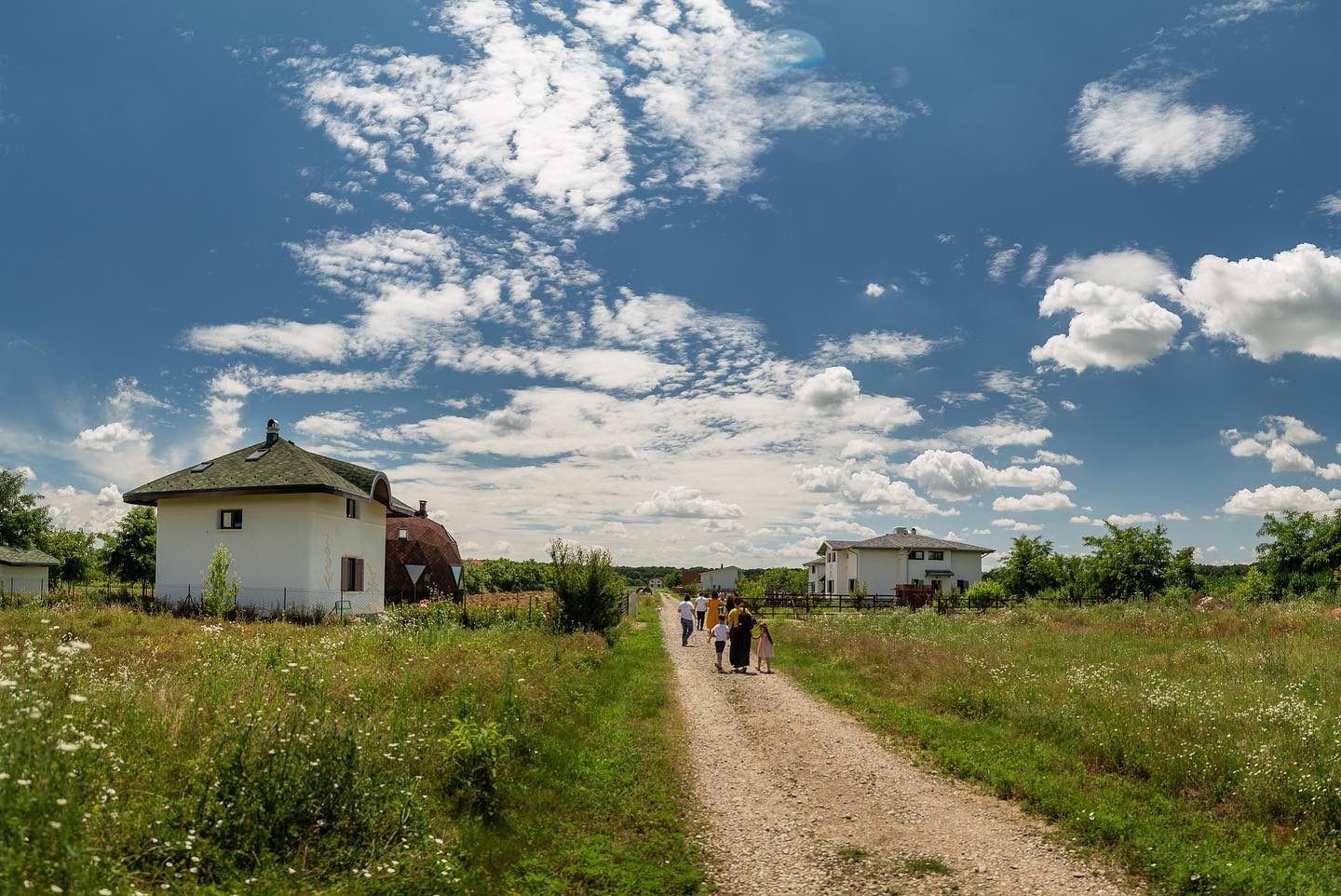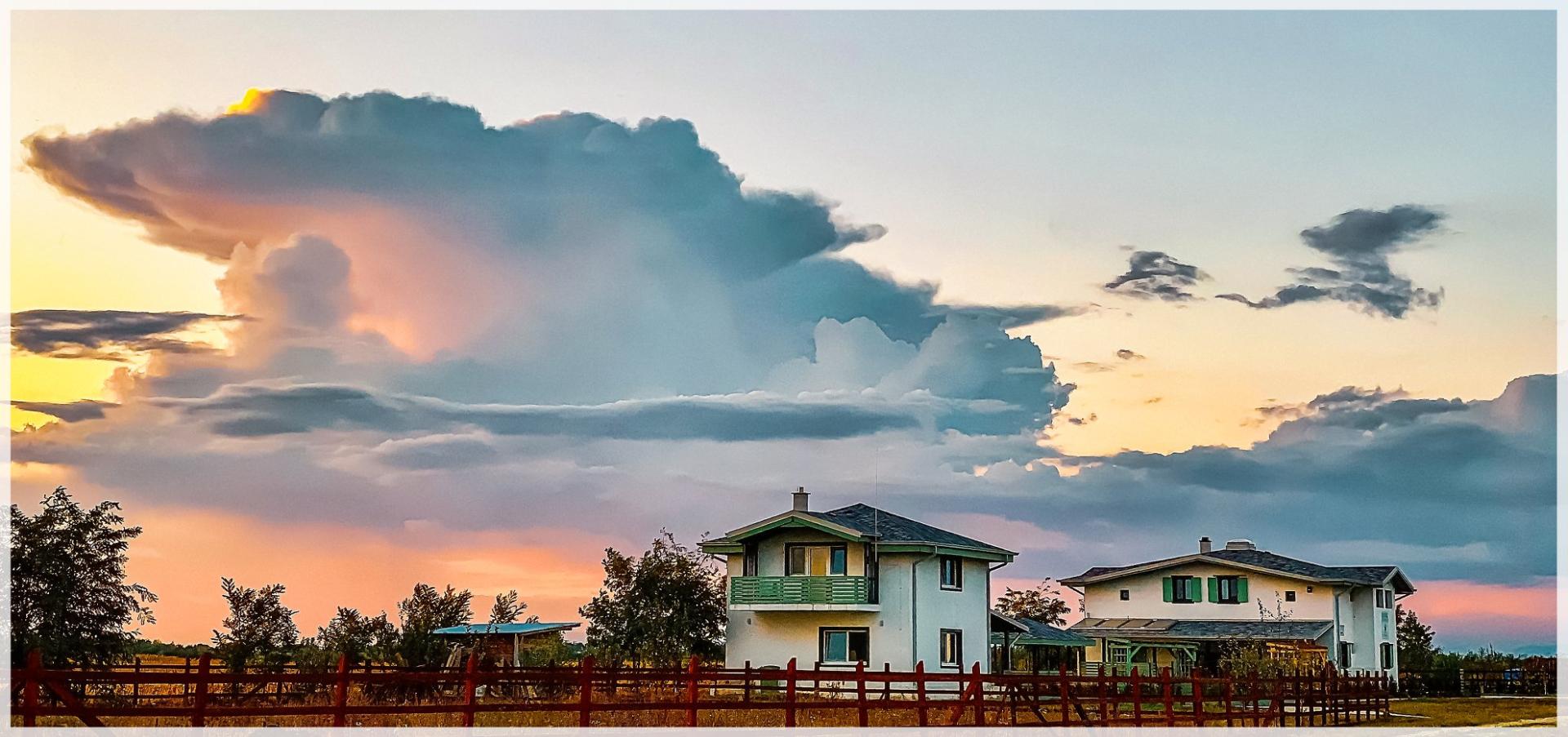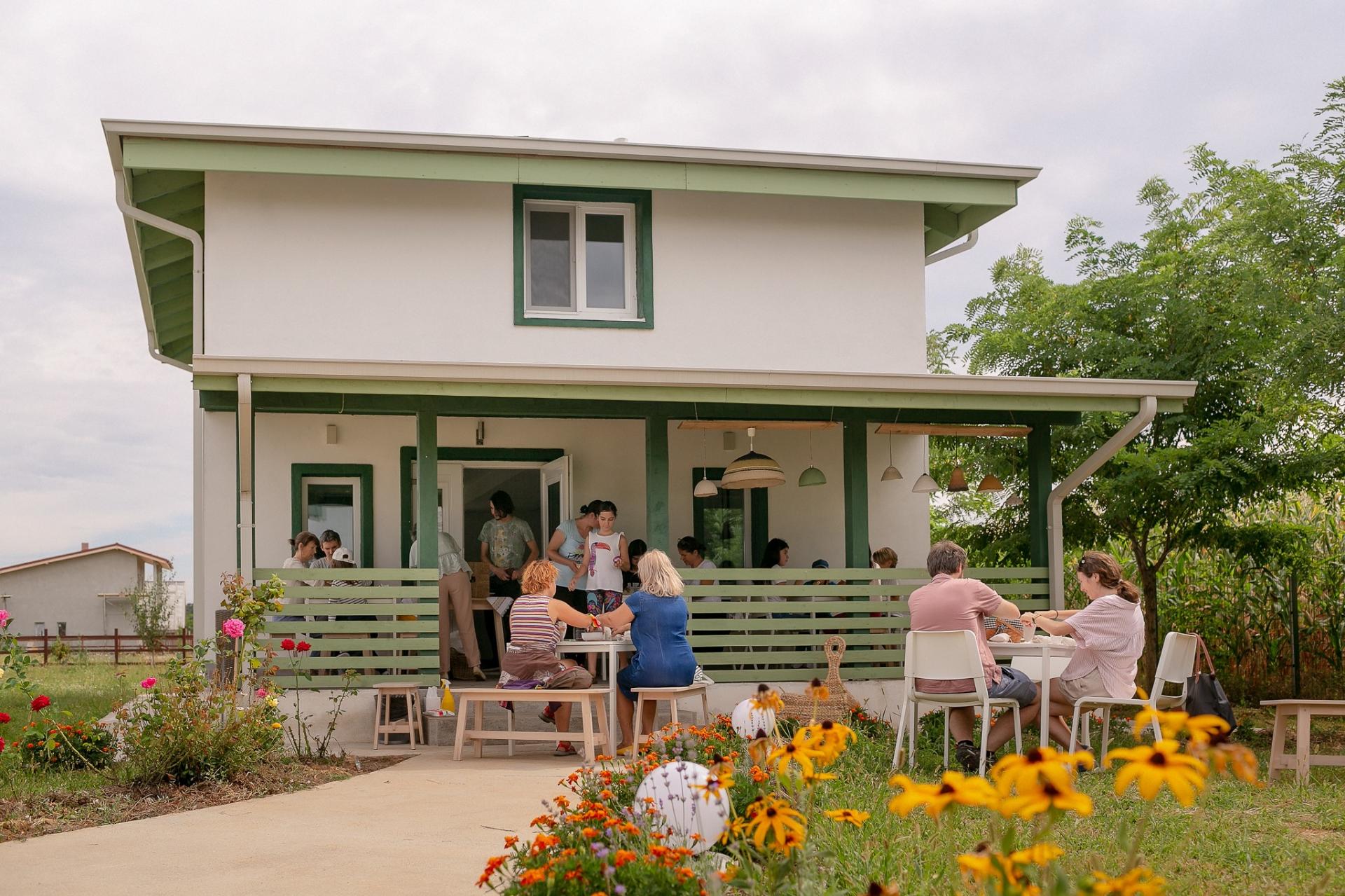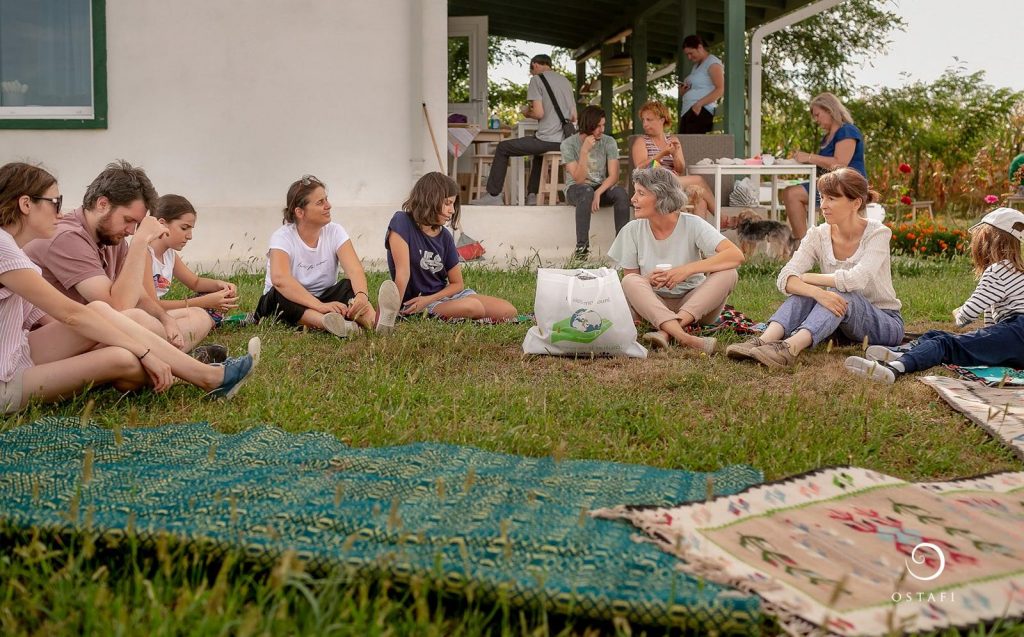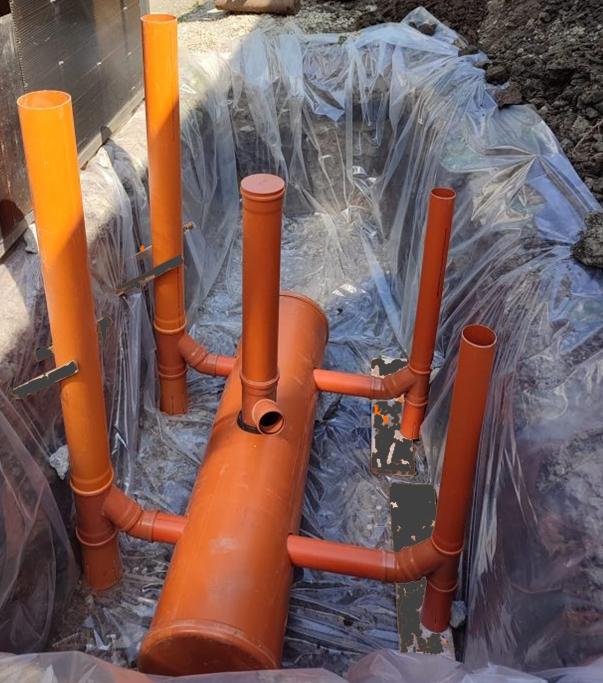Constructed wetlands - zero discharge
Basic information
Project Title
Constructed wetlands - zero discharge
Full project title
Constructed wetlands waste water - zero liquid discharge, in the Poiana Florilor Piscu Romania
Category
Reconnecting with nature
Project Description
We built eight constructed wetlands, with zero liquides discharge in Poiana Florilor district of Piscu Ciolpani, South - Muntenia, Romania, for the evacuation of wastewater. Each is equipped with a device for the evacuation of wastewater purified from the constructed wetland only by forced evaporation, DAUZUC. The water treated by the constructed wetland is discharged to the atmosphere and not on ground, in soil or watercourses. DAUZUC uses only natural processes: capillarity, chimney effect .
Geographical Scope
Local
Project Region
Piscu, Ciolpani, Ilfov ,România, Romania
Urban or rural issues
It addresses urban-rural linkages
Physical or other transformations
It refers to other types of transformations (soft investment)
EU Programme or fund
No
Description of the project
Summary
The overall goal is to implement nature-based solutions on a larger scale to increase resilience to climate change. The project was addressed to the target group of the community of residents from the neighborhood "Poiana Florilor", Piscu. The neighborhood is located 30 km from Bucharest, and is spread over a total area of about 2 ha, of which 0.5 ha are common spaces - access road, parking and green spaces. It comprises 25 plots, nine of which have completed houses and an agro-tourism guesthouse, a craft workshop where specific activities are carried out with the aim of promoting and training a life in harmony with nature. The objectives were: the natural purification of waste water with the help of constructed wetlands, equipped with a device to discharge the purified waste water from the constructed wetland only by forced evaporation, DAUZUC. The water treated through the constructed wetland is discharged into the atmosphere and not into the soil, onto the ground or watercourses, as in the case of sewage treatment plants and septic tanks, by using natural processes: capillarity, chimney effect and evapotranspiration without consumption of energy or chemicals and without periodic emptying. More than that: the complete placement in the greenhouses ensures the water needs of the crops. Other objectives were: educating the inhabitants to understand the concept of sustainability by explaining it and the concepts of green infrastructure and the notions of climate change, constructed wetlands, harmonious integration in nature, capitalizing on the collaboration of different profiles of people (for example: school students, elderly, people at social risk exclusion) to build a better community, convincing locals and visitors, but also the general public, that both centralized sewerage, drainable watertight basins, septic tanks or micro-wastewater treatment plants are solutions that do not respect nature. We built there eight BEVZUC-DAUZUC constructed wetlands.
Key objectives for sustainability
1) Implementation in an ecological neighborhood of constructed wetlands with forced evaporative discharge of purified wastewater, a nature-based solution, resistance to climate change.
Eight such systems have been installed, serving individual homes and an eco-friendly guesthouse.
The project is an example of contributing to several Green Deal objectives such as: infrastructure planning to reduce costs, provide climate-resilient services and improve compliance with the requirements of the Water Framework Directive for better ecological status.
2. Educating residents to understand the concept of sustainability by explaining it and the concepts of green infrastructure and notions of climate change, built wetlands.
Beneficiaries and other residents of various ages and professions participated directly.
Learning by doing these concepts and actions can serve as an example.
3. Convincing local residents and visitors, as well as the general public, that both centralized sewerage and the use of septic tanks for emptying, septic tanks or micro-treatment plants are solutions that do not respect nature, that all these solutions are more expensive, they affect nature and are subject to the negative effects of climate change and that centralized sewage and treatment systems consume energy, chemicals. For centralized sewers and associated treatment plants, the increase in wastewater retention time due to drought and water economy will lead to changes in the composition of the influent wastewater. These lead to accelerated corrosion for the treatment plant, which can reduce the life and integrity of pipes, valves and other components.
Eight such systems have been installed, serving individual homes and an eco-friendly guesthouse.
The project is an example of contributing to several Green Deal objectives such as: infrastructure planning to reduce costs, provide climate-resilient services and improve compliance with the requirements of the Water Framework Directive for better ecological status.
2. Educating residents to understand the concept of sustainability by explaining it and the concepts of green infrastructure and notions of climate change, built wetlands.
Beneficiaries and other residents of various ages and professions participated directly.
Learning by doing these concepts and actions can serve as an example.
3. Convincing local residents and visitors, as well as the general public, that both centralized sewerage and the use of septic tanks for emptying, septic tanks or micro-treatment plants are solutions that do not respect nature, that all these solutions are more expensive, they affect nature and are subject to the negative effects of climate change and that centralized sewage and treatment systems consume energy, chemicals. For centralized sewers and associated treatment plants, the increase in wastewater retention time due to drought and water economy will lead to changes in the composition of the influent wastewater. These lead to accelerated corrosion for the treatment plant, which can reduce the life and integrity of pipes, valves and other components.
Key objectives for aesthetics and quality
In order to bring the aesthetics of nature into the spaces where we build the wetland, we have chosen native plant species that are the most suitable for the local environment. These native plants look healthy year-round, changing their appearance with the seasons and attracting local birds and insects to increase the area's biodiversity. It ensures not only a beautiful and natural area, but eliminates the need for maintenance resources (personnel, materials, water , for crop maintenance). The green infrastructure, with the wetland built by forced evaporation integrated, it fits harmoniously into the nature that surrounds it, the Infrastructure It is designed after the concept of biophilia : love for the nature and for other living beings. The design biophile imitate the nature in the spaces exteriors of the buildings we spend our time in, incorporating different elements of nature outdoors with the goal of improving people's health and well-being. The location of green infrastructure is chosen so that its construction in a strong and beautiful communal area delights citizens and helps to increase and protect local biodiversity.
Key objectives for inclusion
In order to bring the aesthetics of nature into the spaces where we build the wetland, we have chosen native plant species that are the most suitable for the local environment. These native plants look healthy year-round, changing their appearance with the seasons and attracting local birds and insects to increase the area's biodiversity. It ensures not only a beautiful and natural area, but eliminates the need for maintenance resources (personnel, materials, water , for crop maintenance). The green infrastructure, with the wetland built by forced evaporation integrated, it fits harmoniously into the nature that surrounds it. The Infrastructure is designed after the concept of biophilia : love for the nature and for other living beings. The biophile design imitate the nature in the spaces exteriors of the buildings we spend our time in, incorporating different elements of nature outdoors with the goal of improving people's health and well-being. The location of green infrastructure is chosen so that its construction in a beautiful communal area, delights citizens and helps to increase and protect local biodiversity.
Results in relation to category
The project was conceived holistically with the aim of creating a place where human existence is, naturally, a "Life in harmony with Nature".
The project includes a residential neighborhood, a vegetable farm, a craft workshop, a space for events and an agro-tourism guesthouse.
The houses were conceived , designed and executed around the principle "Life in harmony with Nature" - functionally optimized minimalist spaces, as many local and natural materials as possible, comfort and energy efficiency.They are equipped as utilities with: fiber internet, 3-phase 400V electricity and photovoltaic panels , own borehole, wet zone-type sealed basin built for waste water
The project includes a residential neighborhood, a vegetable farm, a craft workshop, a space for events and an agro-tourism guesthouse.
The houses were conceived , designed and executed around the principle "Life in harmony with Nature" - functionally optimized minimalist spaces, as many local and natural materials as possible, comfort and energy efficiency.They are equipped as utilities with: fiber internet, 3-phase 400V electricity and photovoltaic panels , own borehole, wet zone-type sealed basin built for waste water
How Citizens benefit
Applying technology costructed wetlands and building green infrastructure has given everyone an opportunity to work together to return an occupied space to nature, creating a healthier ecosystem for people and a new space for citizens to enjoy and observe nature, all while promoting learning, dialogue and a better community
Physical or other transformations
It refers to other types of transformations (soft investment)
Innovative character
The creation of constructed wetlands with forced evaporation is based on the inventions: "Self-draining septic tank and the utility model "Device for increasing the efficiency of constructed wetlands". The use of these inventions make the DAUZUC wastewater treatment technology an absolute novelty worldwide.
Disciplines/knowledge reflected
Hydrogeology, hydrostatics, hydrodynamics, physics and fluid mechanics, biochemistry and natural sciences were used in the design and implementation of the project. The latest published worldwide studies and specialist consultation were used.
Methodology used
Models, prototypes and series 0 products of the device for increasing the efficiency of DAUZUC constructed wetlands were designed as part of a research project. They were tested in situ for a period between 12 and 24 months . They were installed and monitored in operation
How stakeholders are engaged
The mayor's office at the local level and the Ministry of the Environment and the National Water Agency granted the necessary approvals for the project
Global challenges
Climate change will increase the risk of contamination and acute pollution of fresh water due to reduced river flows, increased water temperature, floods. Reducing water consumption in the long term affects the volume of tributaries reaching treatment plants. The increase in the retention time of wastewater in the collection systems, especially in the upstream sides, leads to changes in the composition of the influent wastewater. These lead to accelerated corrosion for the treatment plant, which can reduce the life and integrity of their components. It also increases the consumption of electricity and chemicals. Mismatches between influent flows and design flow parameters cause failures in collection, treatment and reuse systems. Uncertainty in future conditions limits opportunities for adaptation and resilience to climate change. The constructed wetland with forced evaporative discharge is unaffected by climate change and all these consequences.
Learning transferred to other parties
The entire project, but especially the device for discharging treated wastewater from the wetland constructed only by forced evaporation DAUZUC, could be replicated or transferred to other places, beneficiary groups and contexts. This may involve, for example, aspects of methodology, technology, processes, products, learning.
Keywords
Green homes
Natural wastewater treatment systems
Zero discharge of treated wastewater liquid
Green infrastructure
Resilience to climate change







